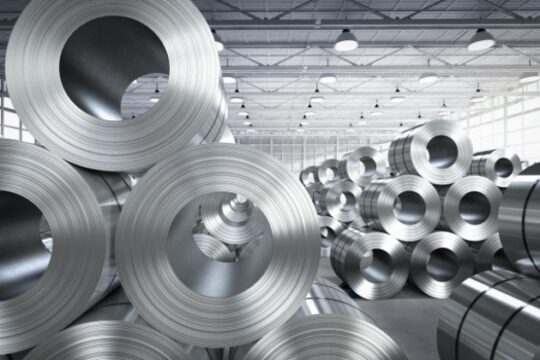 Hermetic sealing is incredibly important for a variety of construction and industrial applications. We’ll walk you through how it works.
Hermetic sealing is incredibly important for a variety of construction and industrial applications. We’ll walk you through how it works.
What do the food, pharmaceutical, electrical, military, and aerospace industries all have in common? Hermetic sealing!
This method of creating an airtight seal is necessary for ensuring that materials – whether solids, liquids, or gas – don’t leak out of their containers. What are the different types of hermetic seals and how do they work? This simple guide will tell you everything you need to know.
What is Hermetic Sealing?
Let’s start at the beginning – what is hermetic sealing? Put simply, it’s a type of container or mechanism that creates a vacuum seal. This prevents contaminants from getting into the container and elements from getting out.
This sealing method is what’s used to keep inert gasses inside the lightbulb. It’s also used to insulate and encase electrical mechanisms and to keep foods and medicines safe. If you’ve ever purchased an item that was vacuum packed or a can of food, you’re familiar with hermetic sealing.
Buildings constructed with sustainable architecture sometimes use airtight hermetic sealing to improve efficiency and conserve energy. It’s also used for landscape lighting and in thermostats, switches, semiconductor electronics, and more.
Companies like Douglas Electrical also create hermetic seals, custom flange vacuum feedthroughs, and cable harnesses for high-vacuum conditions. They’re used in applications like medical equipment, space simulation, gloveboxes, and more. You’ll find these used in semiconductor manufacturing, military, and other high-tech industries.
5 Types of Hermetic Seals
There are five primary types of hermetic sealing technology, each based on the types of materials they fuse together. Each type is created using a high-energy laser or an electron beam that melts the material. It’s then quickly cooled, creating an airtight seal.
Here’s a look at each type in greater detail.
1. Glass-to-Glass
Glass-to-glass hermetic seal is quite common. It’s used for sealing together windows and sealing components of glass tubing. It’s also possible to create seals with several layers of glass.
Typically, at least five layers of glass are needed for a hermetic seal because thermal expansion creates gaps which make compatibility difficult.
2. Glass-to-Metal
Glass-to-metal sealing is often used to create seals that protect electrical mechanisms from dust and microbial growth. The glass can act as an insulator between components like connector pins and the metal packaging.
These seals are often excellent electrical conductors. One of the most common household examples of glass-to-metal sealing is a lightbulb.
There are actually two types of glass-to-metal hermetic seals. The first is known as “matched seals.” This uses materials that have the same thermal expansion properties so the glass and the oxide formed on the metal bond together.
However, due to the high pressure fluctuations between glass and metal, this type of seal isn’t very strong.
The other type is known as “compression,” or “mismatched seals.” It uses steel or stainless steel around the glass. Since this metal has a thermal expansion rate that is higher than the glass, it contracts around the glass when it cools.
This forms a strong hermetic seal that can withstand far more shock and pressure fluctuations than a matched seal.
3. Ceramic-to-Metal
A ceramic-to-metal seal is more expensive, primarily because ceramic is a higher-priced material than glass. These seals are stronger and longer-lasting. However, they’re more likely to chip than glass.
This option is often used in high-voltage environments. You’ll find ceramic-to-metal seals in the medical, automotive, and aerospace industries.
4. Ceramic-to-Glass
When you need a high-pressure alternative to glass seal, consider ceramic-to-glass seals. This is best for situations where the actual seal is likely to undergo large amounts of stress, high temperatures, and/or high voltage.
This type of hermetic seal can hold up to 3,000 volts of static electricity sparks. It’s the most expensive option, but it’s an excellent alternative to glass alone. You’ll often find ceramic-to-glass seals used in signal transmission devices and in motors.
5. Epoxy Seals
Certain types of epoxy seals can give you additional versatility by using copper, brass, and other materials to create a vacuum seal. Epoxy seals have gained a poor reputation for being “non-hermetic,” however, when used correctly, epoxy can work just as well or even better than some of the other options.
While they can help improve design flexibility, epoxy seals also have limits for how much temperature variation they can handle, which means it won’t work for all types of applications.
Epoxy seals are ideal for applications like making coaxial cable seals. They’re also effective for sealing fluids and gas, particularly helium.
Since they have excellent resistance to gasoline and oils they’re commonly used on the automotive, energy, and aerospace industries. Epoxy seals can withstand both high pressure and extreme temperatures ranging from -100 Celsius and 250 Celsius.
Do You Need Hermetic Sealing for Your Business?
As you can see, hermetic sealing is used for a wide variety of purposes. It can improve product safety and is essential for many different industries, including healthcare and electronics.
If your business requires the use of hermetic seals and feedthroughs, it’s critical that you choose the one that will best do the job you need it for. If you don’t know what type of material and system is right for you, you may end up choosing the wrong type.
Before you invest in hermetic sealing solutions, make sure you do your research. Now that you understand the basic types of hermetic seals, spend some more time learning about the pros and cons of each.
Our blog has tons of information about commercial and industrial production and more! Spend some time scrolling through a few more of our posts – you never know what you’re going to learn!




